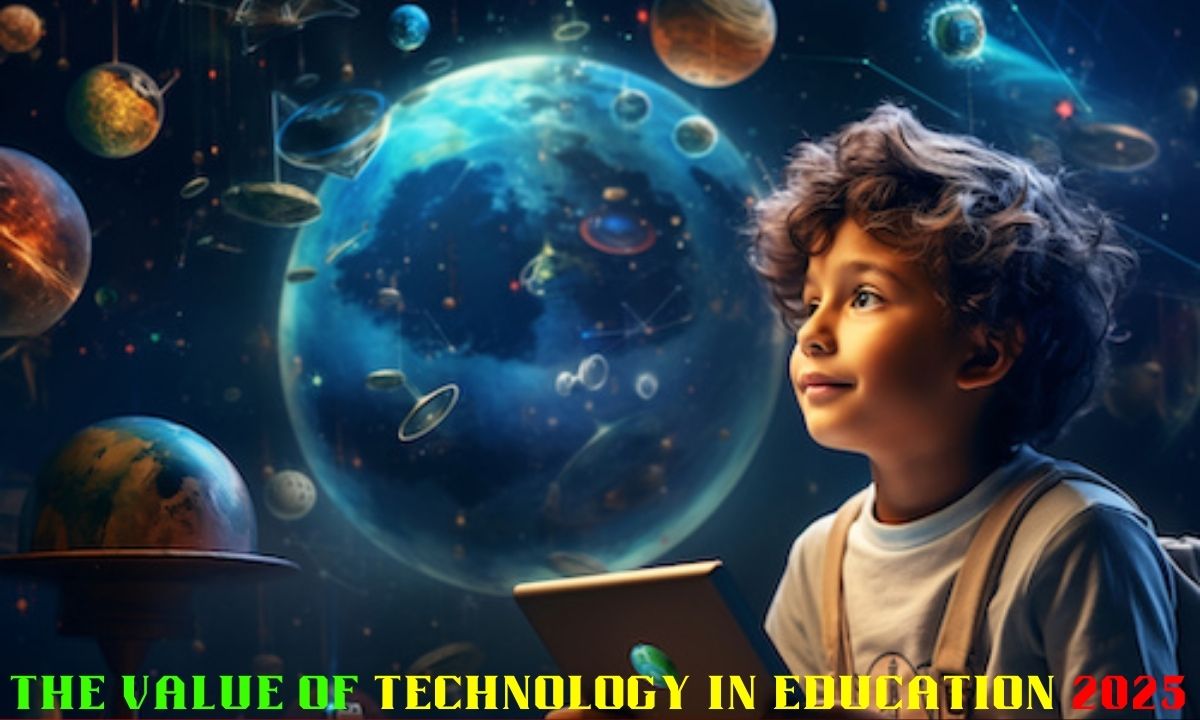Technology is shaping the future of education. It makes learning fun, interactive, and accessible to students everywhere. With digital tools, students can watch videos, join virtual classes, and use apps to understand subjects better. Teachers also benefit by using smart platforms to track progress and create engaging lessons.
By 2025, technology’s role in education will be even bigger. AI tutors, virtual reality, and personalized learning tools will make studying easier. Students will have more flexibility and access to quality education. However, using technology the right way is important. It should enhance learning, not replace critical thinking and real understanding.
Popular Educational Technology Tools and Programs
Educational technology tools are transforming learning by making it interactive, flexible, and engaging. From online courses to gamified lessons, these tools help students learn at their own pace while giving teachers better ways to track progress. When used wisely, technology enhances education and creates a more effective learning experience.
Online Learning
Online learning allows students to study from anywhere using the internet. Platforms like Coursera, Udemy, and Khan Academy offer courses on various subjects. This method provides flexibility, making education accessible to everyone. Students can learn at their own pace with recorded lectures and interactive lessons.
In 2025, online learning will continue to grow with AI-powered tutors and immersive virtual experiences. Schools and universities will integrate digital tools to enhance remote education. Virtual classrooms and personalized learning paths will improve student engagement. However, it’s important to balance screen time and ensure students stay motivated.
Student Creation
Student creation tools let learners develop projects, presentations, and digital content. Platforms like Canva, Adobe Spark, and Google Slides help students express creativity. These tools encourage critical thinking, problem-solving, and collaboration. They also improve digital literacy, which is essential in today’s world.
By 2025, more schools will use student creation tools to enhance learning. AI-assisted design tools and interactive storytelling apps will help students develop stronger communication skills. Hands-on learning through content creation will make education more engaging. Teachers should guide students to use these tools effectively for meaningful learning experiences.
Virtual Meetings
Virtual meetings help students and teachers connect from different locations. Platforms like Zoom, Google Meet, and Microsoft Teams support live classes, discussions, and group projects. These tools make it easier to attend classes, interact with experts, and collaborate with peers.
In 2025, virtual meetings will include better AI features, real-time language translation, and virtual reality integration. These advancements will make online education feel more interactive and engaging. Schools will use virtual classrooms to support global learning. However, teachers must ensure students stay focused and actively participate in discussions.
Flipped Learning
Flipped learning reverses the traditional classroom model. Instead of learning new topics in class, students study at home using videos and online materials. Class time is then used for discussions, problem-solving, and hands-on activities. This approach improves understanding and engagement.
By 2025, flipped learning will become even more effective with AI-driven content recommendations and interactive video lessons. Students will benefit from personalized study plans, while teachers will focus more on guiding discussions and practical learning. However, reliable internet access is necessary to ensure all students benefit equally from this model.
Classroom Management
Classroom management tools help teachers organize lessons, track student progress, and maintain discipline. Apps like Google Classroom, ClassDojo, and Edmodo streamline assignments, communication, and grading. These tools reduce administrative work, allowing teachers to focus more on teaching.
By 2025, AI-powered classroom management tools will provide real-time insights into student performance and behavior. Automated attendance, personalized feedback, and predictive analytics will improve learning outcomes. However, teachers should balance technology with personal interaction to maintain a supportive classroom environment.
Gamification
Gamification makes learning fun by adding game elements to education. Platforms like Kahoot, Quizizz, and Duolingo use rewards, challenges, and leaderboards to motivate students. This method improves engagement, retention, and problem-solving skills.
In 2025, gamification will become more advanced with AI-powered adaptive learning games and virtual reality experiences. Schools will integrate educational games into lesson plans to make subjects more exciting. However, it’s important to ensure students focus on learning, not just winning, and use these tools effectively.
Benefits of Implementing Technology in Education in 2024
Technology is reshaping education, making learning more engaging, flexible, and efficient. It helps students collaborate, personalize their learning, and stay curious with interactive content. Teachers also benefit by improving productivity and streamlining lesson planning. Here are some key advantages of integrating technology into education.
Increased Collaboration
Technology enables students and teachers to connect beyond the classroom. Tools like Google Classroom, Microsoft Teams, and Zoom encourage teamwork through real-time discussions, group projects, and file sharing. This improves communication, problem-solving, and collaboration skills.
In 2024, AI-driven tools will further enhance collaboration by offering real-time feedback and automated group assignments. Virtual learning spaces will allow students worldwide to work together, promoting cultural exchange. However, effective guidance is necessary to ensure meaningful collaboration rather than passive participation.
Opportunities for Personalized Learning
Every student learns at a different pace, and technology helps cater to individual needs. Adaptive learning platforms like Khan Academy and Duolingo offer customized lessons based on student progress. This keeps learners engaged and ensures better understanding.
By 2024, AI-powered tutors and smart learning analytics will refine personalized learning even further. Students will receive tailored recommendations, instant feedback, and interactive resources suited to their strengths and weaknesses. This approach will make learning more effective and enjoyable for all.
Inquisitiveness Motivated by Captivating Content
Engaging content sparks curiosity and enhances learning. Educational apps, interactive videos, and VR-based simulations make subjects more interesting. This motivates students to explore topics beyond textbooks and develop a love for learning.
In 2024, immersive technologies like augmented reality (AR) and gamified lessons will drive deeper engagement. Students will experience history, science, and math in exciting ways, making learning enjoyable. However, it’s essential to maintain a balance between entertainment and education.
Enhanced Efficiency and Productivity of Teachers
Technology reduces teachers’ workload by automating administrative tasks like grading, attendance, and lesson planning. Tools like Google Classroom and AI-powered assistants help educators focus more on teaching rather than paperwork.
By 2024, smart analytics will provide teachers with valuable insights into student performance, allowing them to adjust lessons effectively. Digital resources and AI-generated lesson plans will save time, making education more efficient. However, teachers must use these tools wisely to maintain a strong teacher-student connection.
Read This Blog Also : “90% of Writers Fail! Learn How to Write an Essay in 2025”
8 Tips for Implementing Educational Technology in the Classroom
Integrating technology into the classroom enhances learning and engagement, but proper implementation is essential. Teachers must choose the right tools, provide training, and ensure students actively participate. Here are seven practical tips to make technology integration successful.
1. Start with Clear Learning Goals
Technology should support, not replace, learning. Define clear objectives before integrating digital tools. Whether improving collaboration or making lessons interactive, align technology with student needs. Purposeful use ensures better engagement and enhances overall learning experiences in the classroom.
2. Choose User-Friendly Tools
Select technology that’s easy for students and teachers to navigate. Tools like Google Classroom and Kahoot simplify learning without requiring technical expertise. User-friendly platforms encourage participation, ensuring students focus on learning rather than struggling with complex features.
3. Provide Proper Training
Teachers and students need guidance to use technology effectively. Conduct training sessions, share tutorials, and offer ongoing support. A well-prepared educator can maximize digital tools, making lessons more engaging, efficient, and beneficial for diverse learning styles.
4. Encourage Active Participation
Technology should make learning interactive. Use discussion boards, quizzes, and collaboration tools to keep students engaged. Gamified learning and real-time feedback increase motivation, ensuring students actively participate rather than passively consuming digital content.
5. Monitor Student Progress
Leverage analytics and tracking tools to assess student performance. Digital platforms provide insights into learning habits, helping teachers tailor lessons. Regular monitoring ensures students receive personalized support, improving understanding and academic success.
6. Ensure Digital Safety and Responsibility
Teach students about cybersecurity, responsible internet use, and online etiquette. Set clear guidelines for safe digital behavior. Promoting awareness about data privacy and ethical usage helps create a secure and respectful online learning environment.
7. Continuously Evaluate and Improve
Technology evolves rapidly, so regularly assess its effectiveness. Gather feedback from students and teachers to refine strategies. Adapting to new tools and making improvements ensures technology remains a valuable asset in modern education.
To What Extent Is The Evidence Trustworthy?
The trustworthiness of evidence depends on its source, accuracy, and relevance. Reliable evidence comes from credible sources like academic research, expert opinions, and verified data. Peer-reviewed studies and government reports strengthen credibility, while biased or unverified sources reduce trustworthiness.
Context also matters. Evidence should be up-to-date, relevant to the topic, and supported by multiple sources. Cross-checking information helps confirm accuracy. Digital sources, especially social media, require careful evaluation to avoid misinformation. Ultimately, trustworthy evidence is well-researched, objective, and backed by strong, verifiable data rather than opinions or assumptions.
How Do We Assess The Usefulness of Technology In The Classroom?
Assessing technology in the classroom ensures it enhances learning, engagement, and efficiency. Here’s how we can evaluate its effectiveness:
- Impact on Learning Outcomes – Does technology improve student performance? Teachers can track grades, comprehension, and skill development to measure its effectiveness.
- Student Engagement Levels – Interactive tools should boost participation. Higher engagement in discussions, quizzes, and collaborative projects indicates usefulness.
- Ease of Use for Teachers and Students – A good tool should be simple to implement. If it’s too complex, it may hinder learning rather than support it.
- Personalization and Adaptability – Technology should cater to different learning styles, allowing students to learn at their own pace with customized resources.
- Efficiency in Teaching – Does it save time? Tools that automate grading, track progress, and streamline lessons enhance productivity.
- Feedback from Users – Student and teacher feedback helps determine if technology is beneficial or needs improvement. Regular evaluations ensure it remains effective.
By assessing these factors, schools can ensure technology truly supports education rather than becoming a distraction.
Frequently Asked Questions
Is technology the future of education?
Yes, technology is transforming education by making learning more interactive, personalized, and accessible. It enhances engagement, efficiency, and global collaboration in classrooms.
What is the role of educational technology?
Educational technology improves teaching methods, supports personalized learning, and provides digital tools for collaboration, assessment, and real-time feedback, making education more effective.
Can AI replace teachers?
No, AI can assist teachers by automating tasks and personalizing learning, but it cannot replace human interaction, creativity, and emotional support in education.
What are the risks of AI in education?
AI poses risks like data privacy issues, potential biases, and reduced human interaction, requiring careful implementation and ethical guidelines in education.
What is the latest technology used in education?
The latest technologies include AI-powered tutoring, virtual reality (VR) for immersive learning, adaptive learning platforms, and cloud-based collaboration tools.
In Summary
So guys, in this article, we’ve covered the importance of technology in education, its benefits, and its challenges. Digital tools, AI, and gamification are shaping the future of learning. However, using technology effectively requires a thoughtful approach that enhances, rather than replaces, traditional teaching methods.
I recommend schools and educators embrace technology while maintaining human interaction. AI tutors, virtual classrooms, and gamified learning should support students’ curiosity and critical thinking.
What do you think about the future of technology in education? Drop your thoughts in the comments! If you enjoyed this article, share it with fellow educators and learners. Let’s make education more innovative, engaging, and accessible for everyone!

